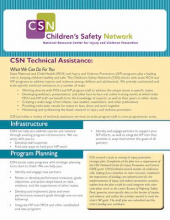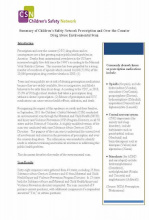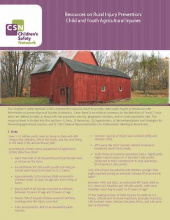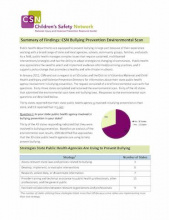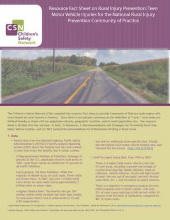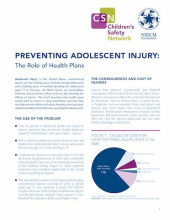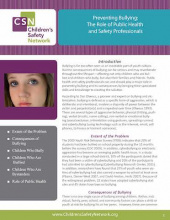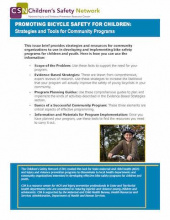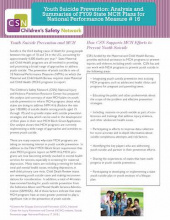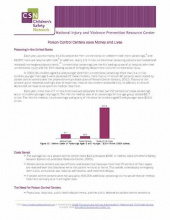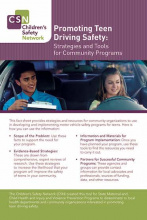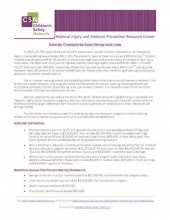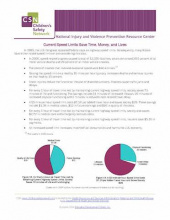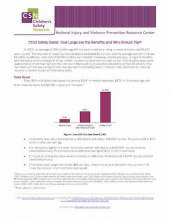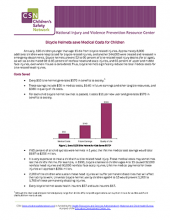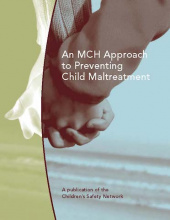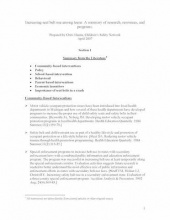CSN Fact Sheets, Reports and Issue Briefs
![]() This page displays all Children’s Safety Network (CSN) Fact Sheets, Reports, and Issue Briefs. Please feel free to download and share through Facebook, X, Pinterest, or email.
This page displays all Children’s Safety Network (CSN) Fact Sheets, Reports, and Issue Briefs. Please feel free to download and share through Facebook, X, Pinterest, or email.
Released Date:
This document outlines how CSN can assist state MCH and IVP programs.
Released Date:
Released Date:
The Children’s Safety Network (CSN) compiled this resource sheet to provide state public health professionals with information on preventing rural injuries in America. Since there is no national consensus on the definition of “rural,” rural areas are defined broadly as those with…
Released Date:
In January 2011, CSN sent out a request to all 50 states and the District of Columbia Maternal and Child Health and Injury and Violence Prevention Directors for information about their state public health agency involvement in bullying prevention. The request consisted of a brief environmental scan…
Released Date:
CSN compiled this resource fact sheet to provide Community of Practice state teams with more details on rural injuries in America. The resource sheet is divided into four sections—1) Data, 2) Resources, 3) Recommendations and Strategies for Preventing Rural Teen Motor Vehicle Crashes, and 4) CSN’s…
Released Date:
This brief describes why health plans would want to invest in injury prevention and how they can help prevent adolescent injury, thereby reducing injuryrelated mortality and health care spending for adolescents.
Released Date:
This resource was recently updated. Visit the latest version. This article discusses the prevalence and consequences of bullying on both the victims and bullies themselves and focuses on the role that public health officials play in preventing bullying.
Released Date:
This tool was created for State Maternal & Child Health (MCH) and injury prevention programs to disseminate to local health departments and community organizations interested in developing effective bike safety programs for children and youth.
Released Date:
CSN's National Injury and Violence Prevention Resource Center prepared this analysis and summary of state MCH plans on youth suicide prevention to inform MCH programs about what states are doing to address NPM #16 (Reduce the rate (per 100,000) of suicide deaths among youths aged 15 through 19) and…
Released Date:
This document analyzes the cost benefits of poison control centers.
Released Date:
This brochure is the second in a series that is being created in response to requests from State health departments for information on best practices for local programs. The publication includes information about the scope of teen driving injuries and fatalities.
Released Date:
This fact sheet shows the importance of sobriety checkpoints in preventing injuries and death while simultaneously saving money.
Released Date:
This fact sheet shows the benefits of current speed limits, including money, time, and lives saved.
Released Date:
This fact sheet summarizes a study of total cost savings of child safety seats. It also outlines incentives for involving insurers in the distribution of child safety seats
Released Date:
This publication discusses the monetary importance of wearing a helmet, focusing on how much helmets decrease medical and insurance costs.
Released Date:
This report provides State MCH professionals with information about child maltreatment and how they can help prevent the abuse and neglect of children. It includes four sections: summary of the extent, causes, and consequences of child maltreatment; describes why and how MCH programs can contribute…
Released Date:
This set of resources was originally prepared for a training titled “Initiative to Enhance Seat Belt Use by Adolescents in New Hampshire Communities”. It is intended to serve as an overview of efforts that have been shown to increase seat belt use among teens.
